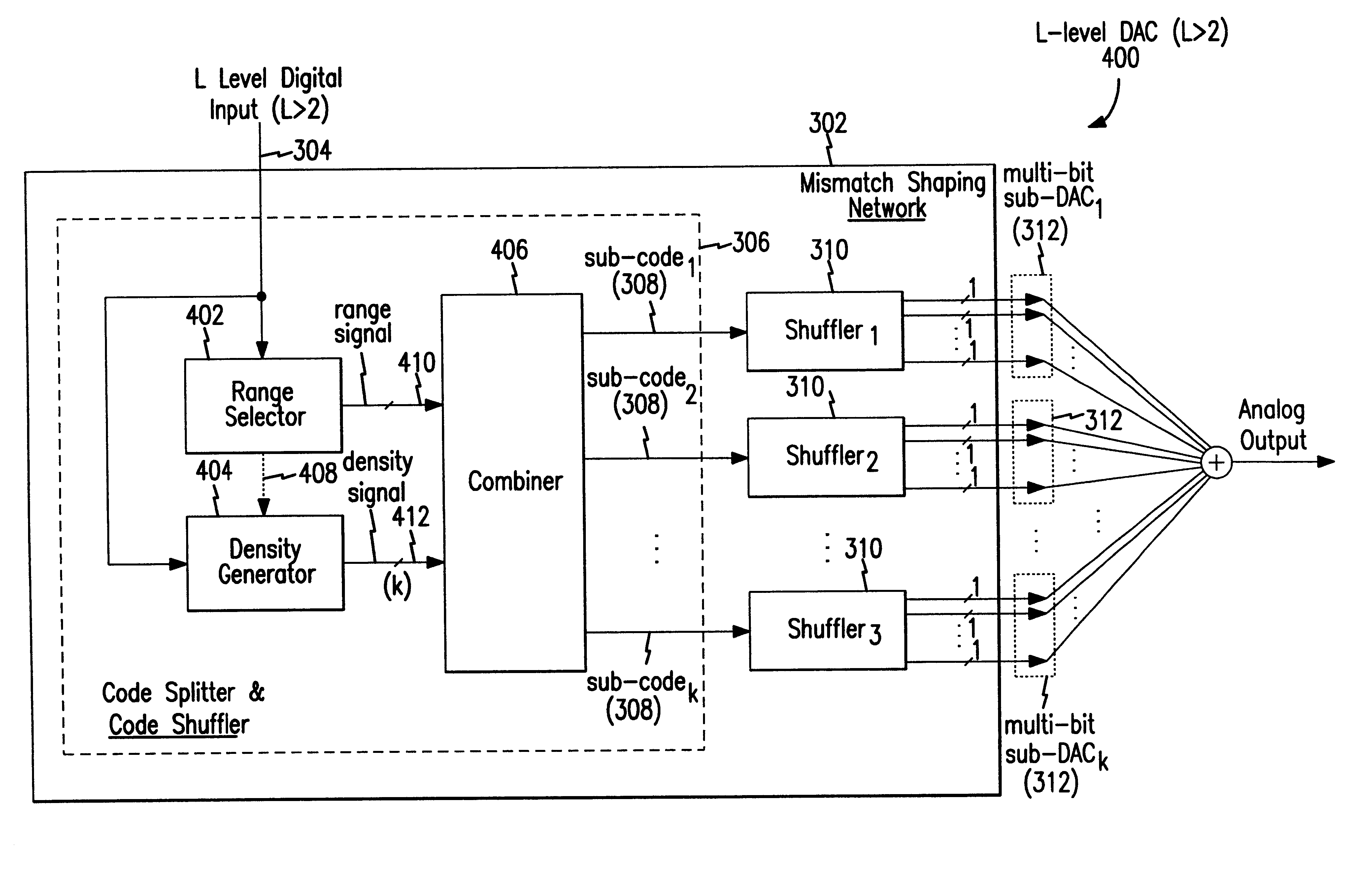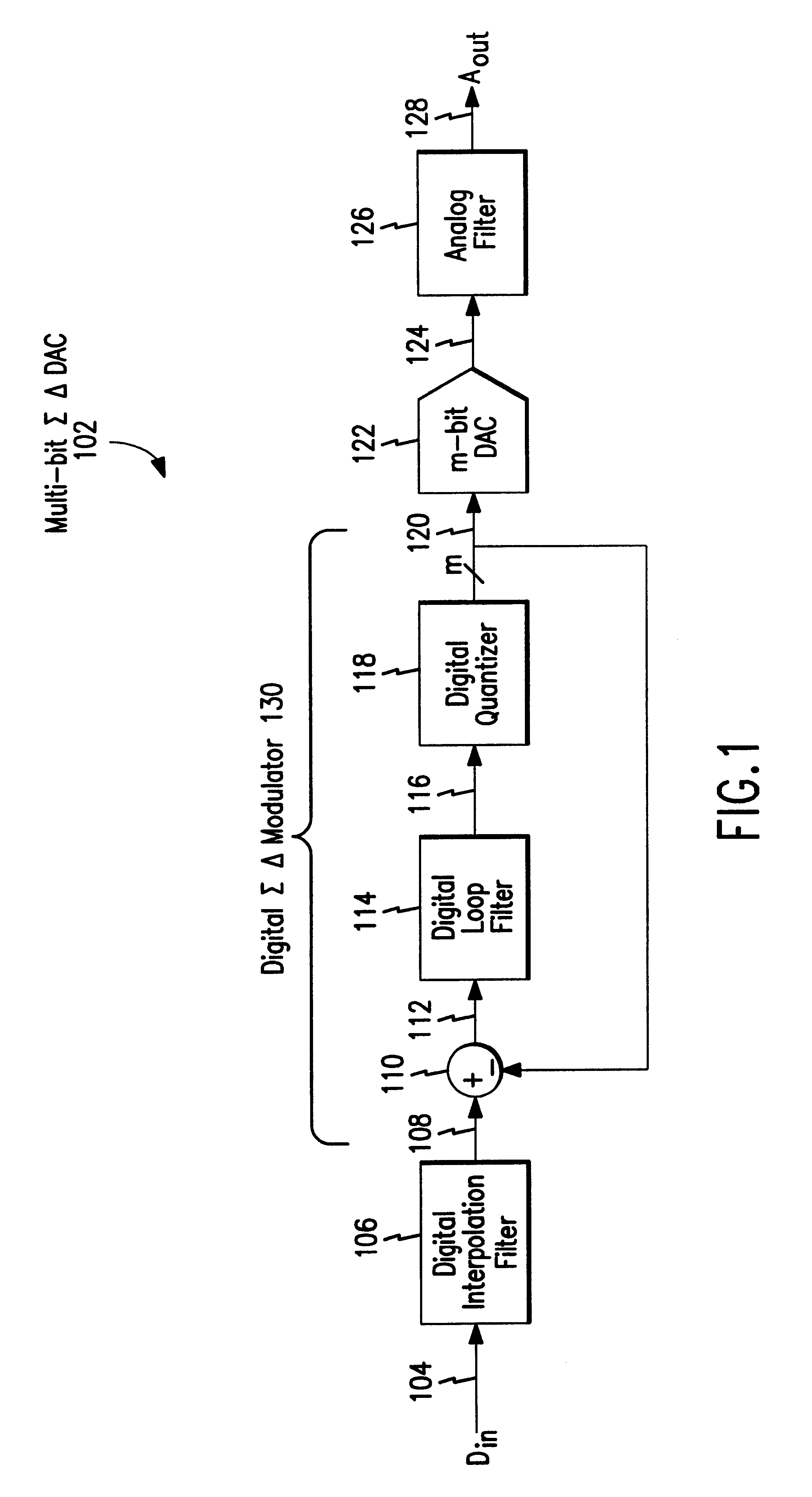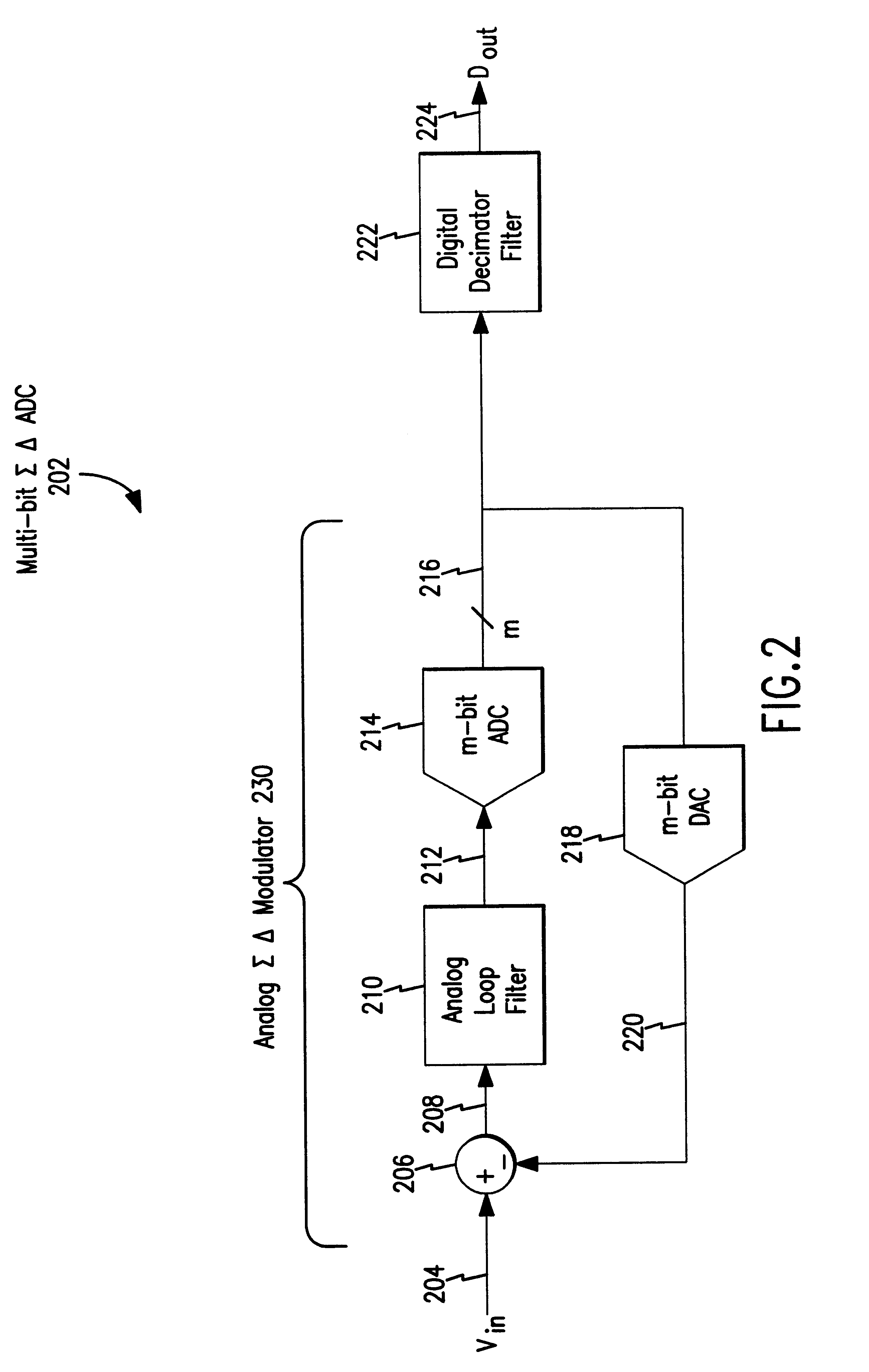Method and apparatus for mismatched shaping of an oversampled converter
- Summary
- Abstract
- Description
- Claims
- Application Information
AI Technical Summary
Problems solved by technology
Method used
Image
Examples
first embodiment
C. Summary of First Embodiment
V. Second Embodiment of Mismatch Shaping Network
A. High Level Overview of Second Embodiment
B. First Implementation
C. Second Implementation
D. Variations on Second Embodiment
VI. Flow Diagrams
VII. Conclusion
The following description is of the best modes presently contemplated for practicing the invention. This description is not to be taken in a limiting sense but is made merely for the purpose of describing the general principles of the invention. The scope of the invention should be ascertained with reference to the claims. In the description of the invention that follows, like numerals or reference designators will be used to refer to like parts or elements throughout.
I. EXEMPLARY ENVIRONMENTS
FIG. 1 shows an exemplary environment in which the present invention is useful. More specifically, FIG. 1 shows an exemplary multi-bit sigma-delta (.SIGMA..DELTA.) digital to analog converter (DAC) 102. Multi-bit .SIGMA..DELTA. DAC 102 includes a digital interpolat...
third embodiment
A first implementation of the mismatch shaping network 302 will be described with reference to FIG. 14. In the first implementation of FIG. 14, digital input signal 304 is a sixteen (16) level input signal that can be equal to binary 0000 (decimal 0) through binary 1111 (decimal 16). In a second implementation, described with reference to FIG. 15, digital input signal 304 is a seventeen (17) level input signal that can be equal to binary 00000 (decimal 0) through binary 10000 (decimal 17).
B. First Implementation
Referring to FIG. 14, digital input signal 304 (also referred to as x) is a sixteen (16) level input signal that can be equal to binary 0000 (decimal 0) through binary 1111 (decimal 16), as just mentioned above.
In this embodiment, the function of truncation block 1302 is accomplished by simply taking the two MSBs (i.e., x) of digital input signal 304 to produce range signal 1304. As mentioned above, range signal 1304 is an implementation of range signal 410.
Similarly, the fun...
second embodiment
D. Variations on Second Embodiment
In the above described implementations of the second embodiment of mismatch shaping network 302, shuffler 1310 is used to move the effects of errors produced by the multi-element sub-DACs to out of band frequencies. As mentioned above, shuffler 1310 can be implemented using the shuffler described above in detail with reference to FIG. 6. Alternatively, any dynamic element matching (DEM) algorithm known in the art (and its corresponding implementation) can be used in place of shuffler 1310 to spectrally shape the gain mismatch errors. Referring to FIG. 13, for example, if the multi-bit DAC 300 is constructed from of K multi-element sub-DACs 312, any K-element DEM encoder can be used in place of shuffler 1310.
PUM
 Login to View More
Login to View More Abstract
Description
Claims
Application Information
 Login to View More
Login to View More - R&D
- Intellectual Property
- Life Sciences
- Materials
- Tech Scout
- Unparalleled Data Quality
- Higher Quality Content
- 60% Fewer Hallucinations
Browse by: Latest US Patents, China's latest patents, Technical Efficacy Thesaurus, Application Domain, Technology Topic, Popular Technical Reports.
© 2025 PatSnap. All rights reserved.Legal|Privacy policy|Modern Slavery Act Transparency Statement|Sitemap|About US| Contact US: help@patsnap.com



